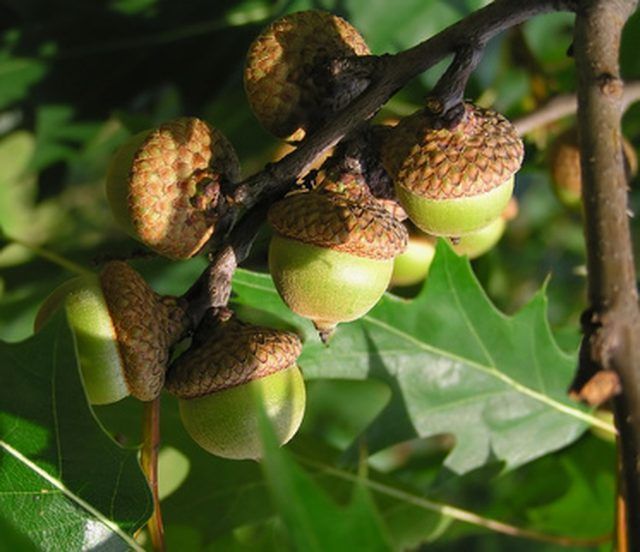Bulbs
Flower Basics
Flower Beds & Specialty Gardens
Flower Garden
Garden Furniture
Garden Gnomes
Garden Seeds
Garden Sheds
Garden Statues
Garden Tools & Supplies
Gardening Basics
Green & Organic
Groundcovers & Vines
Growing Annuals
Growing Basil
Growing Beans
Growing Berries
Growing Blueberries
Growing Cactus
Growing Corn
Growing Cotton
Growing Edibles
Growing Flowers
Growing Garlic
Growing Grapes
Growing Grass
Growing Herbs
Growing Jasmine
Growing Mint
Growing Mushrooms
Orchids
Growing Peanuts
Growing Perennials
Growing Plants
Growing Rosemary
Growing Roses
Growing Strawberries
Growing Sunflowers
Growing Thyme
Growing Tomatoes
Growing Tulips
Growing Vegetables
Herb Basics
Herb Garden
Indoor Growing
Landscaping Basics
Landscaping Patios
Landscaping Plants
Landscaping Shrubs
Landscaping Trees
Landscaping Walks & Pathways
Lawn Basics
Lawn Maintenance
Lawn Mowers
Lawn Ornaments
Lawn Planting
Lawn Tools
Outdoor Growing
Overall Landscape Planning
Pests, Weeds & Problems
Plant Basics
Rock Garden
Rose Garden
Shrubs
Soil
Specialty Gardens
Trees
Vegetable Garden
Yard Maintenance
How to Identify Red Oak, Black Oak, & Burr Oak Trees
How to Identify Red Oak, Black Oak, & Burr Oak Trees. There are over 60 varieties of oak trees across the world, and telling them all apart is sometimes a bit difficult. The Northern Red Oak, Black Oak and Bur (sometimes spelled Burr) Oak are all oak varieties found in eastern North America below 5,000 feet. While all three of these tress may be...

There are over 60 varieties of oak trees across the world, and telling them all apart is sometimes a bit difficult. The Northern Red Oak, Black Oak and Bur (sometimes spelled Burr) Oak are all oak varieties found in eastern North America below 5,000 feet. While all three of these tress may be oak trees, they each have some characteristics that clearly separate them from each other.
Look at the overall shape of the tree. Black Oaks will have a tapering bole, the part of the trunk between the ground and the leaves, and an irregular looking crown of leaves. Both the Northern Red and Bur Oaks will have a round crown of leaves. These two trees will also have a long, clear bole when grown near other trees, and a short thick bole when grown in the open. (The bole is the part of the tree beneath the place where the branches start.) All three trees are over 80 feet tall when fully grown, with the Bur Oak being the tallest at 100 feet.
Examine the bark on the tree. A Black Oak’s bark is almost black and will have deep vertical furrows with horizontal breaks running across the trunk. You can also identify Black Oak by cutting away the outer bark. The inner bark on a Black Oak is yellow and bitter tasting. The bark of a Northern Red Oak has shallow furrows and flattened ridges, which are often white in color. Bur Oak bark has thin vertical ridges and is gray or brown in color.
Find and examine some acorns. Black Oak acorns are between 1/2 and 3/4 inches long and will be half-enclosed in a bowl-shaped cap. Northern Red Oak acorns are about an inch long with a flat cap that barely covers the end of the acorn. Bur Oaks have a large, 1 1/2-inch long acorn that is halfway enclosed in a warty cap that has a fringed margin.
Examine a leaf. A Black Oak leaf can be up to 10 inches long and will have five, and sometimes seven, bristle-tipped lobes. A Black Oak leaf will be green and shiny on the top and paler with a little scruff underneath. A Northern Red Oak leaf will be between 5 and 8 inches long and will have between seven and 11 bristle-tipped lobes. These leaves will be a dull green, sometimes a blue-green, on the top and paler underneath. A Bur Oak leaf will be up to 12 inches long and have numerous small lobes. The leaf will be wider near the tip, with the lobes there resembling a crown. Bur Oak leaves are green on the top and bottom, but the bottom side will be a little fuzzy.